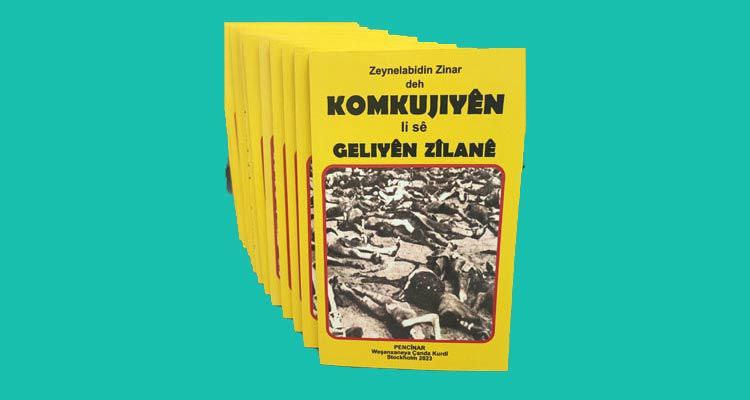Read part 9 of this article here
In the Adana detention center
When the ten men were arrested by the state soldiers, the villagers brought a horse for Bakr Bag, son of Qulikhan Agha, to ride.
The soldiers tied the hands of the other nine men together, placed them forward, and took them away. The Khamur gendarmerie handed over the prisoners to the Dutakh gendarmerie. Those who handed over the prisoners to the Malazg gendarmerie. Thus, the gendarmerie of each region handed over the prisoners to the gendarmerie of another region, and for about a month in the heat of that summer, they were taken on foot to Adana and imprisoned.
State soldiers' words
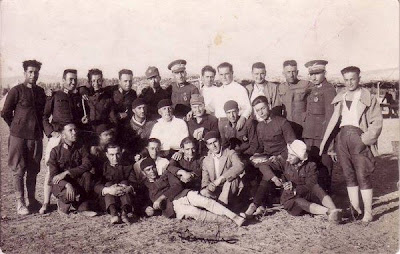
A soldier who participated in the Zilan Valley massacre said:
- Out of 200 villages in the Zilan Valley region, there was not a single village that was not burned. The villages in the Patnos region were all burnt down.
- Another Turkish soldier who participated in the massacre in the Zilan Valley wrote in his memoir that women, children, the elderly, everyone, and people from all villages, gathered tens of thousands of people in the Zilan Valley and surrounded them. We soldiers were above them, our weapons pointed at the people, and our fingers on the trigger. Behind us, the soldiers of Arbash were lined up with weapons in their hands, their guns on our heads. The officers were behind the Arbash soldiers, carrying guns. If we had not killed the Kurds, those behind us would have killed us. If those behind us hadn't killed us, the officers would have killed them.

- On the orders of our commander, we shot all the Kurds; women, children, and the elderly were all killed. When they were shot, their cries reached the sky. But we kept shooting at them and after a while they were quiet. The bodies of the Kurds remained under the sun and rotten.
- A special court for the people of the Zilan Valley was established in Adana. Men who were not killed in the massacre were sent to that prison. Their wives and children were also sent to different parts of Anatolia.
- The commander of the Zilan Valley massacre was Albay Darwesh. Before, his position was Yuzbashi, but in the massacre, he was given the position of Albay.
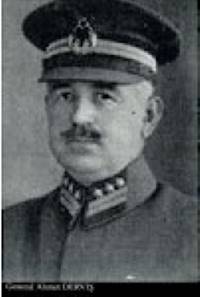
Albay Darwesh Salaniki (1881 – 1932)
The identity of Albay Darwesh, the Kurdish killer:
The real name of the killer of the Kurds in the Zilan Valley is Ahmad Darwesh, but he was called the Darwesh Albay.
In Kurdish publications, he is referred to as Darwesh Albay. Ahmed Darwesh Albay was born in 1886 in Vardar, Salanik. His mother's name was Sadiqa and his father's name was Haji Towfiq. His brothers were Ali, Nusrat, and Muhammad Shukri.
In 1913, Darwesh and his family were taken prisoner in the Battle of Yanya near Mecca and escaped in 1920.
Mustafa Kemal Ataturk, Darwesh, and his brothers studied together. Darwesh then attended the Military Academy and graduated in 1909. Darwesh married for a while and then divorced, but had no children.
Kamal Darwesh, the butcher of Dersim, was a partner of Ahmad Darwesh, the butcher of the Zilan Valley. Nureddin Pasha, the butcher of Qochgir, was the father-in-law of both Darwesh.

Ahmad Darwesh Albay
During this time, Ahmad Darwesh was appointed head of districts 7, 9, and 11. Darwesh also suppressed the uprisings in Konya and Ushaq. In addition, they joined forces with Adham Charkaz and suppressed all uprisings against Mustafa Kemal.
After Ahmad Darwesh wrote a poem about Mustafa Kemal, he was promoted and made an advisor to the defense minister. In an article entitled Nutuk, Mustafa Kamal also spoke about the heroism of the Kurdish killer Ahmad Darwesh.
After the Zilan Valley massacre, he was promoted to a member of the Yargtay army. However, on January 17, 1932, while at work, he suddenly fell to the ground and his body was buried in the Zincirlikuyu Cemetery in Istanbul.
However, on November 29, 1988, his bones were removed and taken to Ankara and buried in the state cemetery.
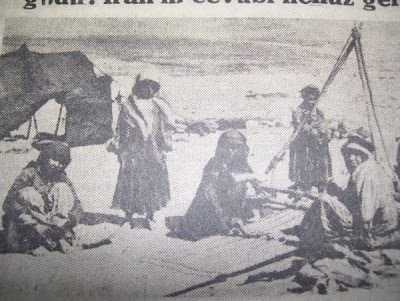
Women and Children of the Zilan Valley Region, July 1930
The daily writings of some soldiers
Of course, everyday handwriting is used by many people, but the handwriting of the state soldiers who massacred the Kurds is very interesting.
A Turkish soldier who was involved in the Kurdish massacre wrote daily about the events that occurred and were mentioned earlier.
Some other Kurds have also spoken about the genocide, orally and in writing.
There were many witnesses to the massacre in the Zilan Valley, some of whom even died several years ago. The most interesting among them is Haji Mihe of the village of Hassan Avdal, whose information was obtained from his son-in-law Ahmad.
The following are some of the people who have told the story of the massacre and have been published in the media:
"Kakil Erdam, Mirza Efendi, Ahmad Yaldiz, Abdulqadir Chalabi, Mirza Akmaz, Rashid Akmaz, Mullah Ahmad Yaldiz, Tahir Nas, Haji Mirza Akmaz, Jamil Tonguch, Mehmet Tash, and Shoret Sham.
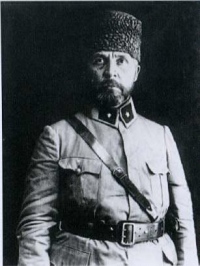
First assassin, Nureddin Pasha (1873-1932)
One of the Kurdish killers is Sakali Nureddin Pasha. The Kurdish killer, a descendant of Devshirmeyan, was born in Bursa in 1873. He attended a military school and is known as a famous assassin. He died on 18 February 1932 in Istanbul.
The first person responsible for the massacre was Nureddin Pasha, known as Sakali Nureddin Pasha, who with Topal Osman Agha suppressed the Qochgir uprising. Next are the two commanders, both Darwesh, the killers of the Zilan Valley massacre.
- Darwesh killed 14 sons of Kor Hussein Pasha Haidari. Only Nader Bag and Mam Bag survived.
- First, they burned 49 villages in the Zilan Valley.
- In 200 villages of Zilan Valley, they burned all.
- 47000 Kurds were killed in the Zilan Valley massacre.
- In 1930, the newspaper Cumhuriyet wrote: The Kurds living in the Zilan Valley are the same as the African savages, very cruel, and eat raw meat.
- July 13, 1930, page 4, cleared. The Kurds of the Zilan Valley were completely killed.
- Kurdish killer, Darwesh said: Bullets are expensive. Do not kill women and children with bullets, but kill them with buttstock.
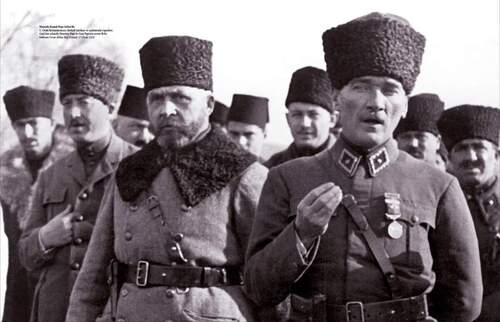
(Photo: Sakali Nureddin Pasha in the left of Ataturk, 1873-1932)
To be continued ...

